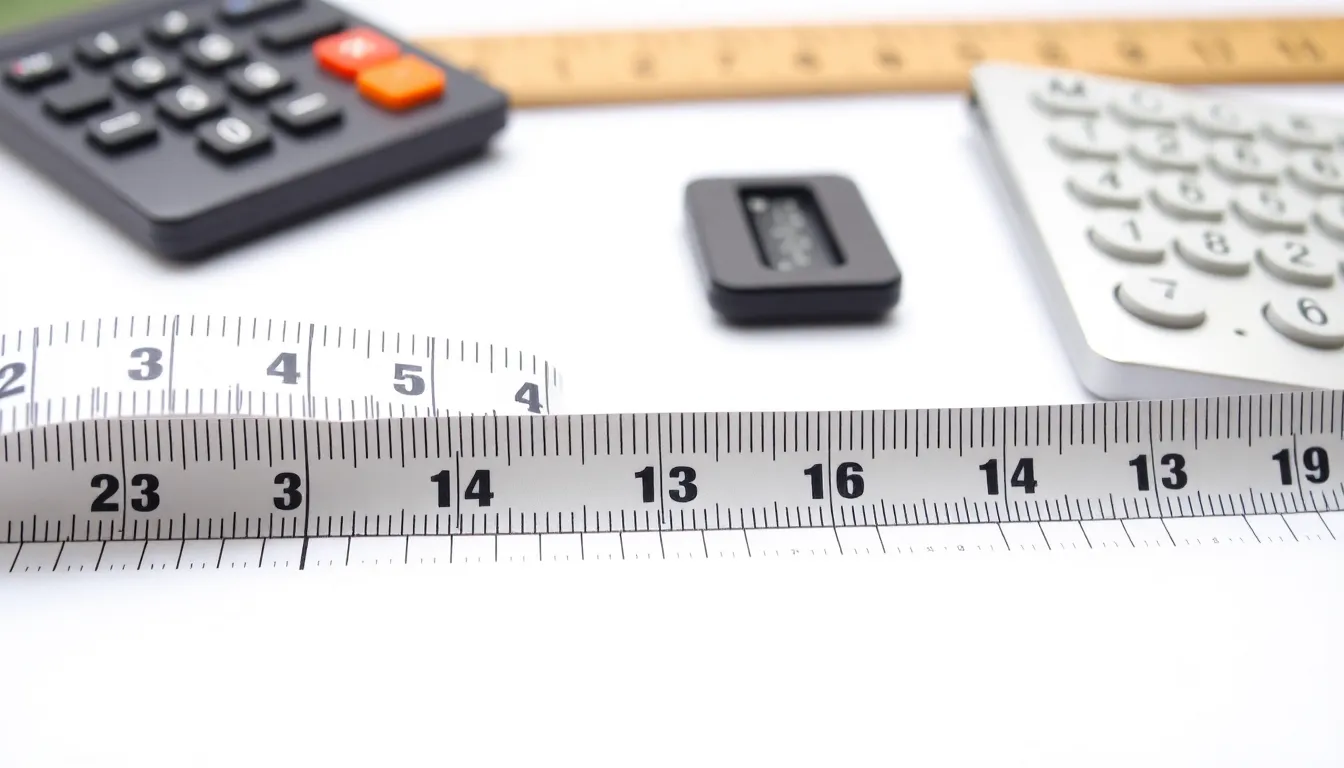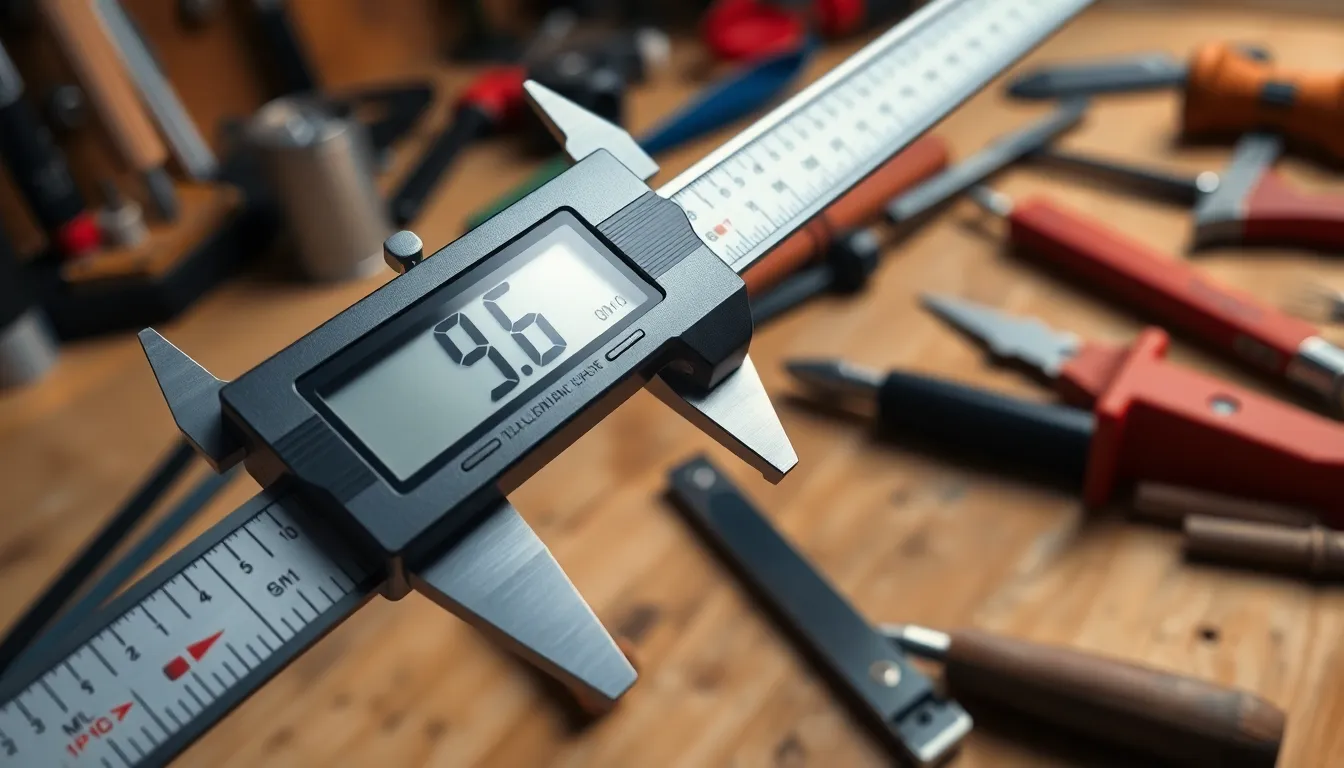When it comes to measurements, converting between millimeters and inches can feel like trying to decipher a secret code. But fear not! Understanding what 22mm means in inches is easier than finding the last piece of pizza at a party.
Table of Contents
ToggleUnderstanding Measurement Conversions
Measurement conversions play a crucial role in many practical applications. Converting millimeters to inches involves using a precise conversion factor. One millimeter equates to approximately 0.03937 inches. Consequently, to convert 22mm to inches, multiply 22 by 0.03937.
Calculating the conversion yields approximately 0.8661 inches. Rounding this number can simplify usage. For instance, 22mm is often rounded to 0.87 inches for practicality in everyday situations.
Understanding the context of measurement conversions matters. People often encounter scenarios where they need to switch between metric and imperial systems. In construction projects, machine parts, or consumer products, precise measurements help ensure accuracy.
Tools and online calculators facilitate these conversions. Various resources provide quick references for essential conversions, mitigating the need for manual calculations. Charts showing common metric to imperial conversions can also enhance understanding.
Actual applications highlight the importance of accurate measurements. A specific tire size or bolt diameter may require exact values in different units to ensure compatibility. Miscalculating these values can lead to significant errors.
When tackling conversions, familiarity with basic relationships between the units fosters confidence. Recognition of the fact that 25.4mm equals 1 inch reinforces the connection. Users can quickly determine that classic fractions, such as 1/16, closely correspond to decimal conversions for centimeters and millimeters.
Ultimately, ease of conversion enhances clarity in communication, especially in technical fields. Acknowledging the relationship between millimeters and inches paves the way for better understanding. Knowledge of specific values fosters a quicker and more effective conversion process.
Millimeters to Inches Conversion

Understanding how to convert millimeters to inches makes measurements easier. The conversion factor indicates that one millimeter equals approximately 0.03937 inches.
The Formula for Conversion
To convert millimeters to inches, multiply the millimeter value by 0.03937. For instance, when converting 22mm, the calculation becomes 22 * 0.03937. The result of this multiplication generates around 0.8661 inches. Rounding this value yields approximately 0.87 inches for practical purposes. Familiarity with this formula simplifies future conversions.
Common Conversion Examples
Common conversions help illustrate the process. For instance, 10mm converts to about 0.3937 inches. Meanwhile, 50mm translates to approximately 1.9685 inches. In addition, 100mm rounds to about 3.937 inches. These examples demonstrate how easily millimeters transfer to inches, reinforcing the importance of accurate measurements for various applications. Utilizing these values ensures precision in everyday tasks, especially in technical fields.
Practical Applications of 22mm
Understanding the conversion of 22mm to inches serves practical purposes across different contexts. This measurement finds relevance in various scenarios.
Everyday Use Cases
Everyday tasks often require precise measurements. For instance, when shopping for tools, items frequently list dimensions in millimeters. A 22mm bolt or pipe fitting highlights the importance of knowing its equivalent in inches, roughly 0.87 inches. Home improvements may involve measuring furniture or appliances, where accurate conversions ensure proper fits. When cooking, knowing metric measurements can become essential, especially in recipes from around the world. A 22mm equivalent may contribute to achieving accurate ingredient proportions.
Impact in Various Industries
Industries greatly rely on the conversion from millimeters to inches. In construction, architects and engineers often use this conversion for accurate building plans. A 22mm dimension in blueprints could represent a critical structural element that translates into approximately 0.87 inches in the physical world. Manufacturing processes necessitate precision, with machine parts typically specified in millimeters. A slight error originating from incorrect conversions can lead to costly mistakes. Additionally, automotive industries utilize these measurements in design and production, ensuring safety and performance standards are met by maintaining accuracy in specifications.
Tools for Measurement Conversion
Converting measurements between millimeters and inches becomes convenient with the right tools. Various resources simplify this process, enhancing accuracy across multiple applications.
Online Conversion Tools
Numerous online conversion tools offer quick and reliable results for converting 22mm to inches. Websites and apps designed for measurement conversion allow users to enter values, instantly calculating their equivalents. These tools typically leverage the precise conversion factor, ensuring there’s no room for error. Users appreciate features like history logs to track previous conversions. Accessibility is another advantage, as most tools are available on smartphones and tablets.
Reference Charts
Reference charts provide a practical way to view millimeter-to-inch conversions at a glance. Many charts list common measurements, allowing users to find equivalences without manual calculations. Typically, charts include a range of values, with 22mm clearly marked as approximately 0.87 inches for easy reference. Charts are beneficial for professionals in construction, manufacturing, and other industries where precision is key. Having these charts readily available promotes quick decision-making during projects.
Understanding the conversion of 22mm to inches is crucial in various fields where precision matters. With 22mm equating to approximately 0.87 inches, this knowledge can significantly impact tasks in construction, manufacturing, and everyday activities.
Utilizing online tools and reference charts makes these conversions straightforward and accessible. By familiarizing oneself with metric and imperial relationships, anyone can enhance their measurement accuracy. This not only improves efficiency but also reduces the risk of errors in critical applications. Embracing these conversion skills empowers individuals to navigate measurement challenges with confidence.




